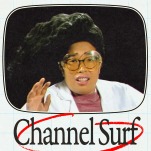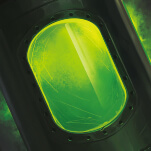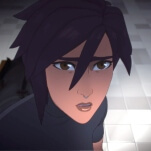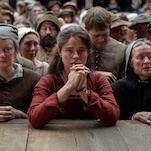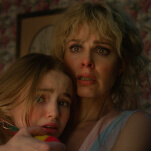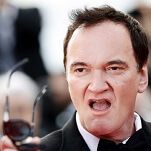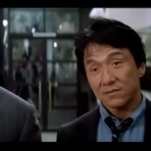Arnold Schwarzenegger played second fiddle to Red Sonja 40 years ago
The rare female-led action movies of the 1980s added a hero to their ranks thanks to an off-brand Conan spin-off.
Photo: MGM/UA Entertainment Co.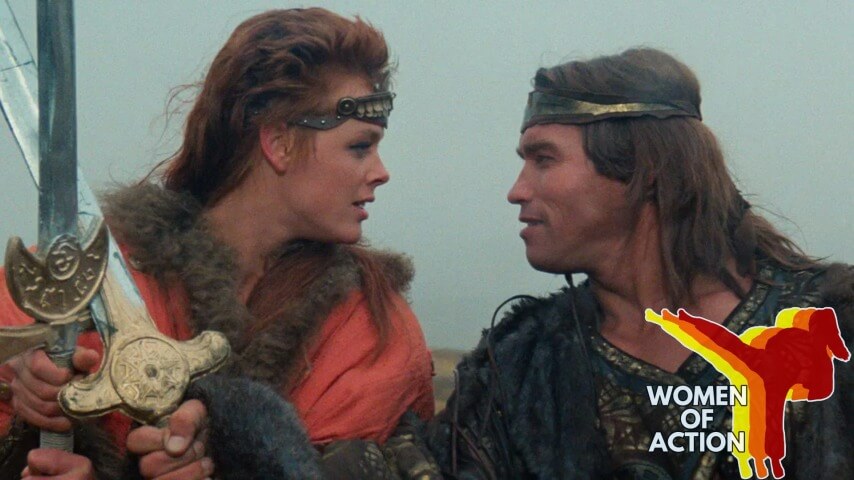
With Women Of Action, Caroline Siede digs into the history of women-driven action movies to explore what these stories say about gender and how depictions of female action heroes have evolved over time.
Back in 2014, when Beyoncé performing in front of the word “feminist” was a major controversy and Marvel was still going all-in on white guys named Chris, I used to tweet a lot about how frustrating it was that there were barely any female-led live-action superhero movies. And I’d almost always get some variation of the same reply. “What about Red Sonja?” “Well, you already have Red Sonja.” “Don’t forget the Red Sonja movie!”
These tweets were mostly trolls. Red Sonja is a largely forgotten 1985 Brigitte Nielsen movie that flopped at the box office, was reviled by critics, and hasn’t even really been reclaimed as a cult classic. (Its average star rating on Letterboxd sits at just 2.5.) Arnold Schwarzenegger has declared it the worst movie he ever made. And though it’s technically based on a Marvel Comics character, its sword-and-sorcery setting makes it way more of a fantasy film than something people would consider a superhero story. But it’s funny how things work out. After years of reflexively ignoring Red Sonja after having it weaponized against me, I finally sat down to watch it for its 40th anniversary and enjoyed it way more than I suspect those trolls thought I would.
It’s a fitting journey for a movie whose very existence was something of a troll. Fresh off making Schwarzenegger a star in 1982’s Conan The Barbarian and its sillier sequel Conan The Destroyer, producer Dino de Laurentiis was hoping to keep the run going with a third Conan film. But the rights to the character were held by Universal and though de Laurentiis had signed Schwarzenegger for a multi-picture deal, he didn’t have the budget to pay him for a full shooting schedule. So de Laurentiis came up with a workaround: He’d make a Red Sonja spin-off movie that positioned Schwarzenegger as a beefed-up supporting character (though still first-billed in the credits). Also, he’d rename Schwarzenegger’s character “Kalidor” to skirt the rights issue.
Thus Red Sonja joined Aliens, Supergirl, and Terminator as one of the few female-led American action movies of the 1980s, even though the real goal was to Trojan Horse another Conan film into theaters. It’s one of many such compromises you have to accept when looking for female representation in the dude-driven action genre. For instance, like Conan, Red Sonja started as a creation of legendary 1930s pulp writer Robert E. Howard, who imagined her as a 16th-century gunslinger. Only, Marvel Comics took the name and signature hair color to create a buxom, chainmail-bikini-wearing babe for the “Hyborian Age” Conan The Barbarian comics the company began adapting from Howard’s stories in the 1970s.
The film adaptation at least lets Nielsen wear a bit more clothing in her thigh-baring gladiatorial look, but keeps her comics-accurate traumatic backstory. An opening prologue establishes that evil warriors destroyed Sonja’s village, killed her parents, and gang-raped her—all because she refused the advances of the evil Queen Gedren (Sandahl Bergman). Left for dead, Sonja’s prayer for revenge is answered by a glowing goddess who gives her superheroic sword-fighting abilities.
Not the best or most sensitive intro for what’s ultimately a breezy romp. But things pick up as the story jumps a few years into the future, where Sonja has been living and training in the temple of a master swordsman. We get to see a quick battle in which he declares that Sonja is so skilled, he has nothing left to teach her. (“You are the master of the master. Never have I seen your equal.”) Soon she’s roped into a quest that involves saving the world from Gedren’s magical manipulations, all while teaming up with an entitled young prince named Tarn (Ernie Reyes, Jr.), his clownish caretaker Falkon (Paul Smith), and—at least when the movie can afford him—fellow warrior Lord Kalidor (Schwarzenegger).
Beyond its unnecessary traumatic backstory, there are two main critiques held against the Red Sonja movie. The first is that it’s too silly compared to the deeply serious original Conan movie, even though that’s the direction the more family-friendly 1984 sequel Conan The Destroyer had already taken the franchise. (Richard Fleischer directed both Sonja and Destroyer after John Milius helmed the original Conan film.) The second is that Nielsen gives some sort of epically bad central performance, even though the first film features Schwarzenegger looking so dead-eyed it’s a wonder he managed to find his mark. In fact, watching all three movies back-to-back, the bad acting just starts to feel like part of the Hyborian Age world-building rather than something Nielsen alone is guilty of.



